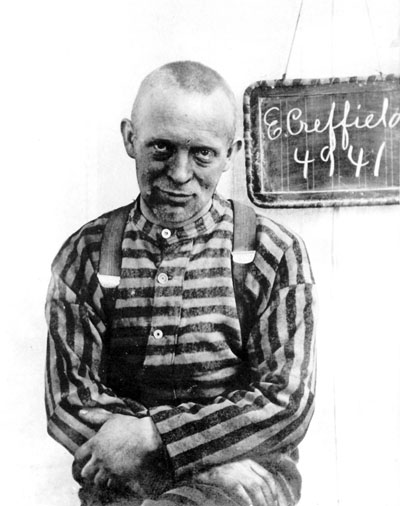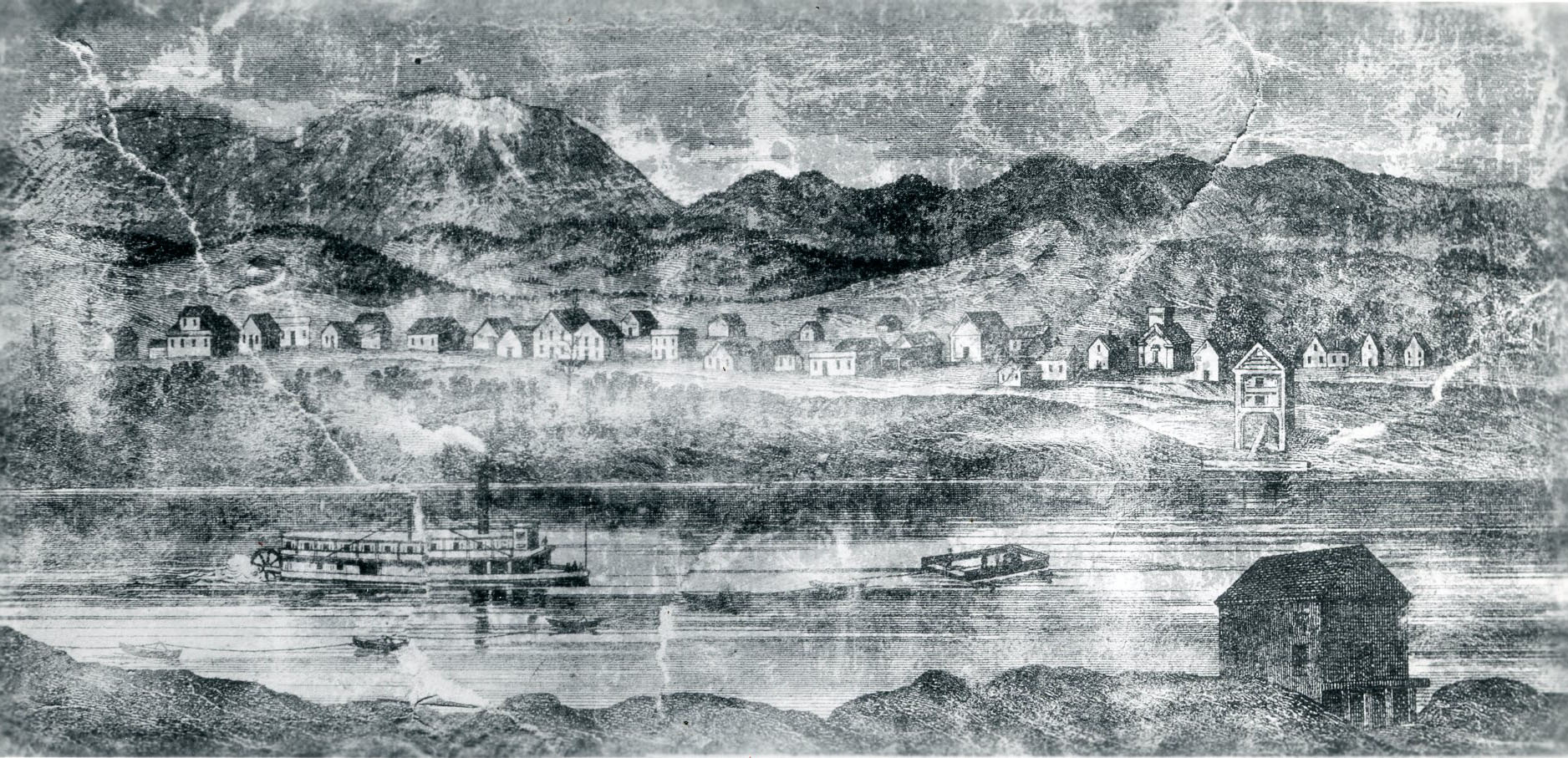In 1903, Edmund Creffield, a thirty-three-year-old German immigrant and former Salvation Army captain, persuaded about twenty Salvation Army soldiers in Corvallis to join his church, the Brides of Christ. Townspeople referred to the group as Holy Rollers because they rolled on the floor for hours during their services. Holy Rollers was a pejorative term that was already widely used to refer to Pentecostal Christians who rolled and spoke in tongues.
According to news reports, Creffield preached that one of his followers was destined to be the mother of the second Christ, that he needed to purify them by laying his hands on them, that they rolled while almost nude, that they practiced “free love,” and that mothers were debauched in front of their children. Creffield claimed that many of the things published about him were untrue.
In January 1904, a group of men attacked Creffield, tarred and feathered him, and ordered him to leave town. The next day he married one of his followers, Maud Hurt. Hurt’s siblings, Frank and Mae, and their mother Sarah were also Creffield’s followers.
In March, church member Donna Starr (Hurt’s aunt) signed a statement in Portland claiming that she had had adulterous relations with Creffield. Adultery was a criminal offense, and Creffield went into hiding from the police. John Manning, Multnomah County district attorney, issued an arrest warrant, and a statewide search for Creffield ensued.
Many of Creffield’s followers began to spend their days lying on the floor facedown, praying and claiming to receive messages from God. Worried friends and family petitioned judges to have them committed to the asylum, and most were. Those over eighteen years old were sent to the Oregon State Insane Asylum in Salem, and those who were younger were sent to the Boys and Girls Aid Society in Portland.
In July, a month after Sarah Hurt was committed, Creffield was found naked and starving in a hole under her house. He was found guilty and sentenced to two years in the Oregon State Penitentiary.
After Creffield was released from prison in 1906, he alleged that he was Christ raised from the dead—his death being his incarceration in the penitentiary. His followers believed that he was responsible for the San Francisco earthquake and that he would destroy Corvallis. Most of his followers joined him in Waldport, on the Oregon coast, including Cora Hartley and her daughter Sophie. Cora Hartley’s husband followed them and, as they boarded a ferry in Newport, fired a pistol at Creffield. The gun clicked harmlessly because he had used the wrong kind of bullets.
Hartley was only one of several men gunning for Creffield. Creffield and Maud Hurt left his group of followers at a camp near Yachats, telling them that the couple was going to British Columbia to establish a colony. George Mitchell, Donna Starr’s brother, tracked them to Seattle and killed Creffield in front of witnesses. Mitchell pleaded not guilty by reason of insanity.
The defense’s case argued that Mitchell murdered Creffield because he believed Creffield “lusted” after Esther Mitchell, his eighteen-year-old sister, and had selected her to be the mother of the next Christ. John Manning sent a letter to an appalled Kenneth Mackintosh, King County prosecuting attorney, saying that because of his own dealings with Creffield, he thought that “the taking of the law in one’s own hands, under such circumstances, to mete out summary justice is almost excusable.”
George Mitchell was acquitted. As he boarded a train to Portland, Esther killed him using a pistol she and Maud Hurt had purchased with their witness fees. Maud committed suicide. Esther was found not guilty by reason of insanity and was committed to Western State Hospital in Steilacoom, Washington.
-
![Edmund Creffield, prison photo]()
Edmund Creffield, prison photo.
Edmund Creffield, prison photo Courtesy Oregon State Archives
-
![]()
"Apostles are Gone: Leaders of Holy Rollers Take to Flight," Morning Oregonian, Nov. 3, 1903.
Courtesy Portland Oregonian
-
![]()
"He Goes to Prison," Morning Oregonian, Sept. 17, 1904.
Courtesy Portland Oregonian
-
![]()
"Slayer's Sister Carried Messages," Morning Oregonians, May 8, 1906.
Courtesy Portland Oregonian
-
![]()
"Mitchell Girl Very Fanatical," Morning Oregonian, July 13, 1906.
Courtesy Portland Oregonian
Related Entries
-
![Corvallis]()
Corvallis
Nestled on the west side of the mid-Willamette River, Corvallis is domi…
-
![Oregon State Penitentiary]()
Oregon State Penitentiary
The Oregon State Penitentiary, Oregon's only maximum-security prison, s…
Map This on the Oregon History WayFinder
The Oregon History Wayfinder is an interactive map that identifies significant places, people, and events in Oregon history.
Further Reading
Baldasty, Gerald J. Vigilante Newspapers: A Tale of Sex, Religion, & Murder in the Northwest. Seattle: University of Washington Press, 2005.
McCracken, T. and Robert B. Blodgett. Holy Rollers: Murder and Madness in Oregon’s Love Cult. Caldwell, Idaho: Caxton Press, 2002.
Phillips, Jim and Rosemary Gartner. Murdering Holiness: The Trials of Franz Creffield and George Mitchell. Vancouver, B.C.: UBC Press, 2003.







